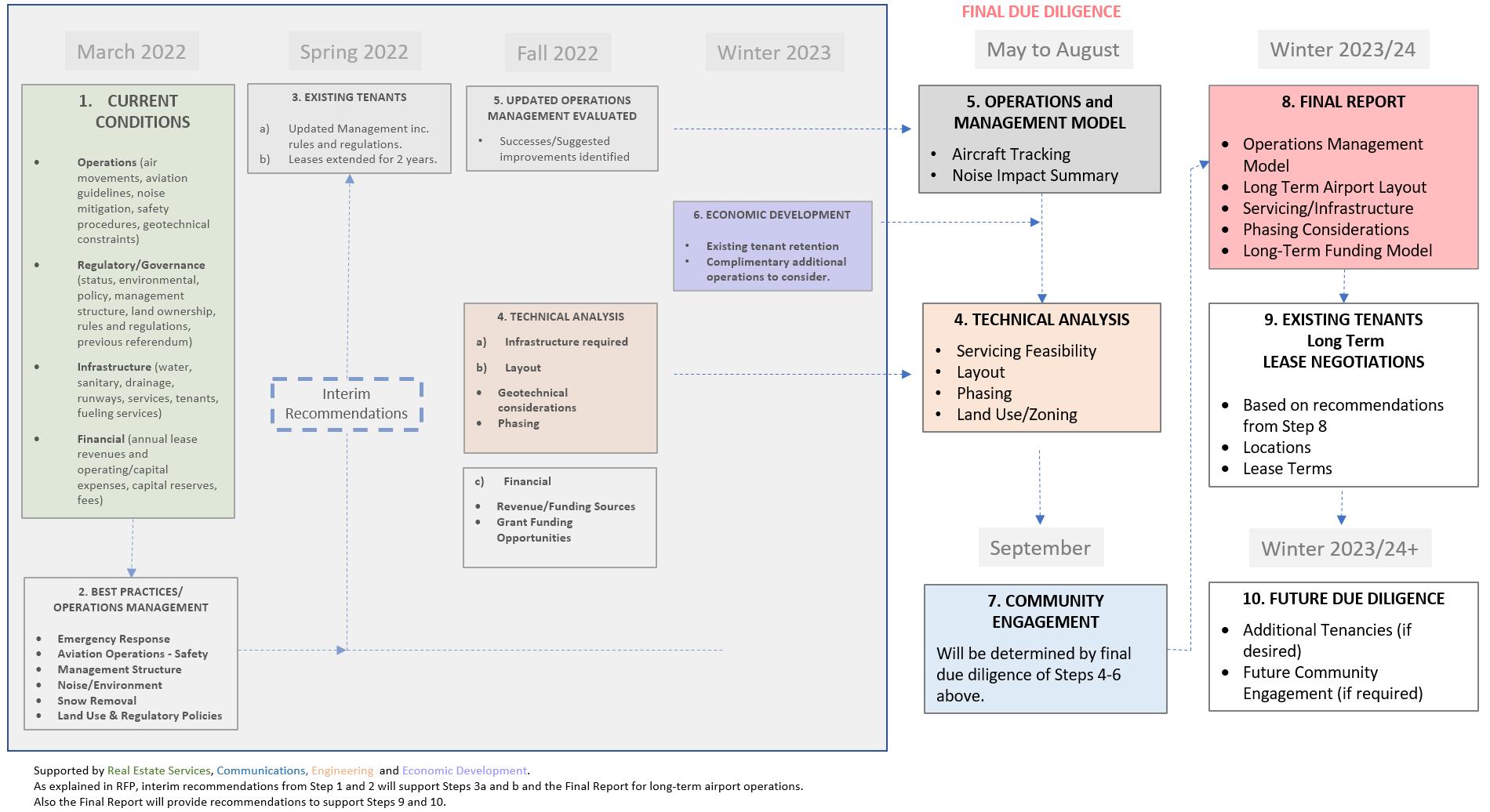
1 minute read
4 IMPLEMENTATION STRATEGY
As examined in Section 2, progress will continue to be required on implementing the action items provided in the Interim Recommendations Report, including on items previously scheduled for completion that have not been finalized. Updated timelines are provided in Table 4.1
Apron Management Repairs
Airport Administration
Third-party
Airport Operations
Winter maintenance by District Public Works Division
Ongoing Initiative, Future Options for Service Being
Rules and Regulations
2023-24: Continuation by Public Works Division 2025+: Future options being assessed in the Strategic Plan
In addition to the progress on the spring 2022 interim operational recommendations, work is currently underway by District Staff and HM Aero on the Long-Term Strategic Plan. The grey area shown in Figure 4.1 identifies the categories of work that have been advanced on the Long-Term Strategic Plan to-date, including the:
• Site constraints analysis;
• Policy considerations analysis
• Review of landownership considerations;
• Preliminary identification of potential business opportunities;
• Preliminary Airport Layout Plan;
• Servicing requirements and cost estimates; and
• Capital funding models.
Steps 4
Technical Analysis and 5
Operations and Management Model are planned for continued due diligence between May and August 2023 prior to Step 7 – Community Engagement. The type and areas of focus of future community engagement will be informed based on the outcomes of the LongTerm Strategic Plan due diligence process.
Based on the work completed to-date, it is possible to provide further clarity on the next steps required to complete the Long-Term Strategic Plan and revised estimates for completion. After this report is reviewed and endorsed by District Council, HM Aero and District staff will advance the completion of the Long-Term Strategic Plan. The initial Airport Strategy Process Scope endorsed by District Council in December 2021 (Figure 1.1) is proposed to be updated as shown in Figure 4.1.



